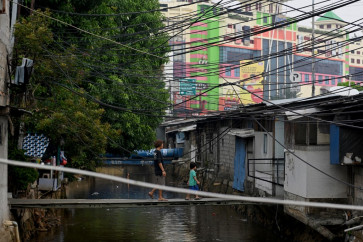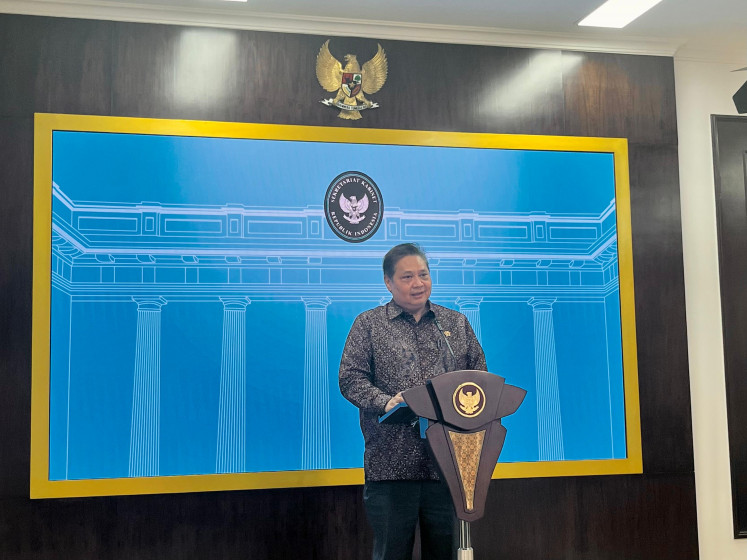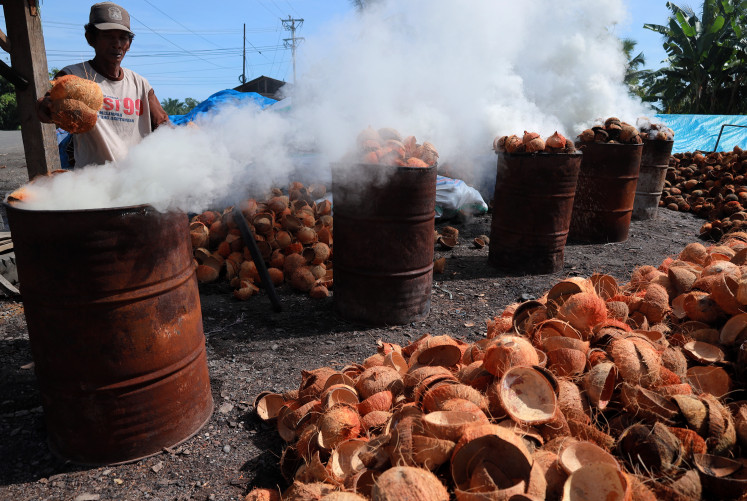Pollution may be threatening seafood: LIPI
Your seafood meal may be not as healthy as you think, as the latest research indicates that fish, mussels and clams in some Indonesian waters are contaminated with hazardous substances from algae as a result of water pollution
Change text size
Gift Premium Articles
to Anyone

Y
our seafood meal may be not as healthy as you think, as the latest research indicates that fish, mussels and clams in some Indonesian waters are contaminated with hazardous substances from algae as a result of water pollution.
The growth of toxic algae poses hazards to marine environments as they produce substances that may cause illness or even death.
“We are concerned, as harmful algae will not only affect the likes of clams, mussels and fish, but also humans,” said Zainal Arifin, head of the research center for oceanography (RCO) at the Indonesian Institute of Sciences (LIPI).
He made the statement on the sidelines of a workshop on seafood safety and mariculture. It was co-funded by the Japan government through the North Pacific Marine Science Organization (PICES) and USAID’s Indonesia Marine and Climate Support Project.
In 2004, fish poisoning cases occurred in several regions. Some speculated that it was related to harmful algae. During the year, fishermen in Jakarta Bay suffered financial losses as they could not sell their sea products.
In 2011, people from Southeast Sulawesi experienced dizziness and vomiting after eating fish.
During the workshop, five marine scientists from Canada and the US shared experiences on methods to identify harmful algal, including cell identification using light microscopes, testing for algae toxins in seawater and shellfish, and strategies to monitor harmful algal blooms.
The RCO LIPI has been collecting samples from waters in provinces with high cases of harmful algal blooms, such as Kao Bay in Halmahera and Ambon Bay in Ambon, Maluku, as well as waters in Papua and east of Kalimantan.
Hikmah Thoha, a marine scientist at the RCO LIPI, said the center had analyzed and identified samples collected from the areas under the microscope. “Once we have some information, we will pass it to the government so it can issue warnings for the fishermen,” she told The Jakarta Post.
Vera Trainer, a marine scientist from the National Oceanic and Atmospheric Administration (NOAA) in Seattle, said that a combination of microscopic work and rapid toxin screening could detect the toxin level of seafood products. By using microscopes, scientists could know what organisms were present.
“Then, we can do rapid toxin screening methods to tell us whether the shellfish have harmful levels of toxins or lower level of toxins that make them safe,” she said.
The rapid test was introduced to participants during the workshop. The test, which is very much like a pregnancy test, is not only accurate but also cost-efficient as it costs only US$20 per test. It’s also quite a simple procedure.
“This can be done by grinding the shellfish in kitchen utensils, heating the shellfish and adding common chemicals such as alcohol or vinegar that we can buy in the grocery store. Boil the samples, let them cool and apply to the strip tester. Then, you will be get yes or no answers in only 15 minutes,” said Trainer, adding that green mussels from Jakarta Bay identified in the workshop were safe.
Yet, toxins cannot be removed from polluted seafood products. “So, the best solution is to provide warning for the people and identify the areas that aren’t safe, and do another test in a week. If it’s fine then it’s safe again,” she added.
“By using this rapid screening method, we hope to be able to create a map of where there are [harmful algal blooms] problems in our country, so that people can then have knowledge on what areas are safe and not safe for the harvesting of seafood products,” said Zainal.
Given the situation, Indonesia is unlikely to increase its exports of fishery products by 300 percent by 2013.
Zainal said the country might miss the target if it just depended on catching fish. On the contrary, an incorrect coastal aqua culture would cause more problems. Poor flushing in marine culture areas might result in increased algal blooms.
“We can avoid a blooming phenomenon of environmentally hazardous phytoplankton by the practice of waste water treatment. Or if we know that harmful algal blooms occur in particular waterways, we can warn people that those areas are not allowed for fishing,” Zainal said.
Nutrients coming from land-based activities, including nitrate, phosphate and silicate, will cause increased levels of algal blooms.
“Feeds from aqua culture may also lead to algal blooms as well, as they contain nutrients. We have to anticipate a possible blooming of phytoplankton,” said Zainal. The government planned to increase exports of seafood products by 300 percent by 2013. However, it may not achieve the target without developing its marine culture.









